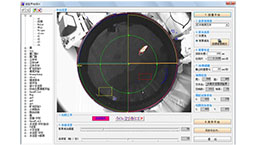Rabbit Model for Osteoarthritis (OA)
Ostarthritis; Ostearthritis; OA
- Product No.DSI587Rb03
- Organism SpeciesOryctolagus cuniculus (Rabbit) Same name, Different species.
- Prototype SpeciesHuman
- SourceInduced by mechanical brake
- Model Animal Strainsears white rabbit, healthy, male and female, weight 1.5-2.5kg.
- Modeling GroupingRandomly divided into six group: Control group, Model group, Positive drug group and Test drug group.
- Modeling Period4-6 weeks
- Modeling MethodAfter a period of mechanical immobilization of lower limb joints of an animal model, there may be clinically similar degenerative changes in the articular sclerate cartilage, regardless of any locally impressed pressure. Research shows that most immobilization-induced articular cartilage changes are irreversible after immobilization of rabbit joints for 60 d. If the immobilization is less than 30 d, the round protuberance on the joint surface under electron microscope is not completely destroyed and the fiber bundle on the tangent layer is not exposed, it is possible that the lesion may be cured. Immobilization duration of over 30 d may result in a progressive joint destruction. In case of immobilization in the flexed position, the reduction in the crossing knee joint muscle contraction will lead to an atrophic change in the articular bone; in case of immobilization in the straight position, the joint motion, muscle and articular capsule contraction are restricted and the excessive pressure on the joint surface may result in osteoarthritis. The experimental research further shows that the joint immobilization with a period of less than 4 weeks has a certain pathological accumulation effect, so it is considered that an osteoarthritis animal model can be obtained after rabbit joint immobilization in the straight position for 5 to 6 weeks.
- Applicationsn/a
- Downloadn/a
- UOM Each case
- FOB
US$
For more details, please contact local distributors!
Model Evaluation
Pathological Results
Cytokines Level
Statistical Analysis
SPSS software is used for statistical analysis, measurement data to mean ± standard deviation (x ±s), using t test and single factor analysis of variance for group comparison, P<0.05 indicates there was a significant difference, P<0.01 indicates there are very significant differences.
GIVEAWAYS
INCREMENT SERVICES
-
 Tissue/Sections Customized Service
Tissue/Sections Customized Service
-
 Serums Customized Service
Serums Customized Service
-
 Immunohistochemistry (IHC) Experiment Service
Immunohistochemistry (IHC) Experiment Service
-
 Small Animal In Vivo Imaging Experiment Service
Small Animal In Vivo Imaging Experiment Service
-
 Small Animal Micro CT Imaging Experiment Service
Small Animal Micro CT Imaging Experiment Service
-
 Small Animal MRI Imaging Experiment Service
Small Animal MRI Imaging Experiment Service
-
 Small Animal Ultrasound Imaging Experiment Service
Small Animal Ultrasound Imaging Experiment Service
-
 Transmission Electron Microscopy (TEM) Experiment Service
Transmission Electron Microscopy (TEM) Experiment Service
-
 Scanning Electron Microscope (SEM) Experiment Service
Scanning Electron Microscope (SEM) Experiment Service
-
 Learning and Memory Behavioral Experiment Service
Learning and Memory Behavioral Experiment Service
-
 Anxiety and Depression Behavioral Experiment Service
Anxiety and Depression Behavioral Experiment Service
-
 Drug Addiction Behavioral Experiment Service
Drug Addiction Behavioral Experiment Service
-
 Pain Behavioral Experiment Service
Pain Behavioral Experiment Service
-
 Neuropsychiatric Disorder Behavioral Experiment Service
Neuropsychiatric Disorder Behavioral Experiment Service
-
 Fatigue Behavioral Experiment Service
Fatigue Behavioral Experiment Service
-
 Nitric Oxide Assay Kit (A012)
Nitric Oxide Assay Kit (A012)
-
 Nitric Oxide Assay Kit (A013-2)
Nitric Oxide Assay Kit (A013-2)
-
 Total Anti-Oxidative Capability Assay Kit(A015-2)
Total Anti-Oxidative Capability Assay Kit(A015-2)
-
 Total Anti-Oxidative Capability Assay Kit (A015-1)
Total Anti-Oxidative Capability Assay Kit (A015-1)
-
 Superoxide Dismutase Assay Kit
Superoxide Dismutase Assay Kit
-
 Fructose Assay Kit (A085)
Fructose Assay Kit (A085)
-
 Citric Acid Assay Kit (A128 )
Citric Acid Assay Kit (A128 )
-
 Catalase Assay Kit
Catalase Assay Kit
-
 Malondialdehyde Assay Kit
Malondialdehyde Assay Kit
-
 Glutathione S-Transferase Assay Kit
Glutathione S-Transferase Assay Kit
-
 Microscale Reduced Glutathione assay kit
Microscale Reduced Glutathione assay kit
-
 Glutathione Reductase Activity Coefficient Assay Kit
Glutathione Reductase Activity Coefficient Assay Kit
-
 Angiotensin Converting Enzyme Kit
Angiotensin Converting Enzyme Kit
-
 Glutathione Peroxidase (GSH-PX) Assay Kit
Glutathione Peroxidase (GSH-PX) Assay Kit
-
 Cloud-Clone Multiplex assay kits
Cloud-Clone Multiplex assay kits
| Catalog No. | Related products for research use of Oryctolagus cuniculus (Rabbit) Organism species | Applications (RESEARCH USE ONLY!) |
| DSI587Rb05 | Rabbit Model for Osteoarthritis (OA) | n/a |
| DSI587Rb01 | Rabbit Model for Osteoarthritis (OA) | n/a |
| DSI587Rb02 | Rabbit Model for Osteoarthritis (OA) | n/a |
| DSI587Rb03 | Rabbit Model for Osteoarthritis (OA) | n/a |
| DSI587Rb04 | Rabbit Model for Osteoarthritis (OA) | n/a |





